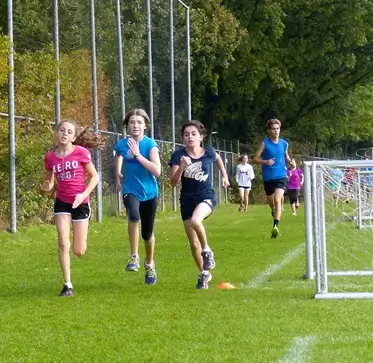CRFC BLOGS
LATEST BLOGS & NEWSLETTERS
The Ultimate Guide to Soccer Fitness for Youth Players
Soccer is an exciting and challenging sport that needs players to be fit and ready. For young players, getting in shape for soccer isn’t about endless running or lifting heavy weights. Instead, it’s about building a fun, balanced routine that helps them perform well on the field while staying safe and injury-free.
Why Is Fitness Important in Soccer?
Soccer is a fast-paced game that tests a player’s speed, strength, endurance, and agility. Fitness is the key to success, from sprinting to scoring a goal to defending against opponents. For youth players, staying fit is essential for the following reasons:
Perform Better
Being fit makes it easier to play at their best.
Stay Healthy
Fitness reduces the chance of injuries and helps young players grow stronger.
Last Longer
A fit player can stay active and focused throughout the entire game.
What Kind of Fitness Does Soccer Need?
Soccer is different from many sports because it combines:
Speed and Agility
Quick direction changes and sprints.
Endurance
Running and staying active for an entire game.
Strength
Defending against opponents and striking the ball powerfully.
Focus
Making smart decisions even when tired.

Starting with the Basics
Before jumping into advanced exercises, young players need to build a strong foundation.
Warm-Up Properly
Warming up prevents injuries and gets the body ready for action. Exercises like high knees, butt kicks, and arm circles are easy and effective.
Strengthen the Core
The core (stomach and back muscles) helps with balance and power. Simple exercises like planks and sit-ups are a great start.
Creating a Soccer Fitness Routine
A good fitness plan for soccer includes different types of training to cover all the skills needed:
1. Cardio Training
Soccer players need stamina for long games and energy for quick sprints. They should mix sprints, jogging, and High-Intensity Interval Training (HIIT).
Example
Sprint for 30 seconds, then jog for 1 minute. Repeat 5–8 times.
2. Strength Training
Strength helps players stay firm on the ball and avoid injuries. Use bodyweight exercises like squats, lunges, and pushups. Focus on steady progress without pushing your muscles too hard.
3. Agility and Speed Drills
Agility is essential for quick direction changes during games. Practice cone zigzags or ladder drills to improve speed and coordination.
4. Endurance Training
Longer runs or small-sided soccer games build stamina. Add team challenges or timed laps.

How to Stay Safe and Avoid Injuries
For youth players, safety is just as important as fitness:
Strengthen Joints
Exercises like single-leg squats can help protect growing knees and ankles.
Take Rest Days
Overtraining can lead to injuries and burnout, so balance training with rest.
Nutrition Tips for Players
Eating and drinking right is just as important as training.
Eat a Balanced Diet
Include plenty of carbohydrates (energy), protein (muscle repair), and healthy fats.
Stay Hydrated
Drink water before, during, and after games to avoid dehydration.
Snack Smart
Great options include bananas, yogurt, or trail mix for quick energy boosts.

Track Progress and Set Goals
Encourage young players to keep track of their fitness journey.
- They can time their sprints or count how many pushups they can do.
- Set small, achievable goals like running for an extra minute or improving a drill.
Parents and Coaches: Supporting Young Players
Parents and coaches are essential in helping kids stay motivated and safe.
Focus on Effort Over Results
Praise their hard work, not just their wins.
Balance Training and Rest
Ensure kids aren’t overdoing it.
Stay Positive
Encourage and listen to players if they feel tired or overwhelmed.

Conclusion
Soccer fitness doesn’t have to be complicated. With a mix of cardio, strength, agility, and fun, youth players can build the fitness they need to excel on the field. It’s not just about the destination—it’s about enjoying the journey and celebrating every step forward.
FAQs
Why is fitness important for youth soccer players?
Fitness helps young players perform better, stay healthy, and keep their energy throughout the game. It also lowers the risk of injuries and helps them grow stronger.
What kind of fitness do soccer players need?
Soccer players need a mix of speed, endurance, strength, and agility. They must be quick, last the entire game, and stay strong against opponents while making smart decisions.
How can young players avoid injuries while training?
Warm-ups and joint-strengthening exercises like single-leg squats help prevent injuries. Taking rest days is also crucial to avoid overtraining and burnout.
What should soccer players eat to stay energized?
A balanced diet with carbohydrates for energy, protein for muscle repair, and healthy fats is ideal. Hydration is essential, and snacks like bananas, yogurt, or trail mix work great before or after training.
How can parents and coaches help young players stay motivated?
Encourage effort over results, balance training with rest, and keep a positive attitude. Celebrate small wins and listen to players if they feel tired or need support.

Did you find this useful?


